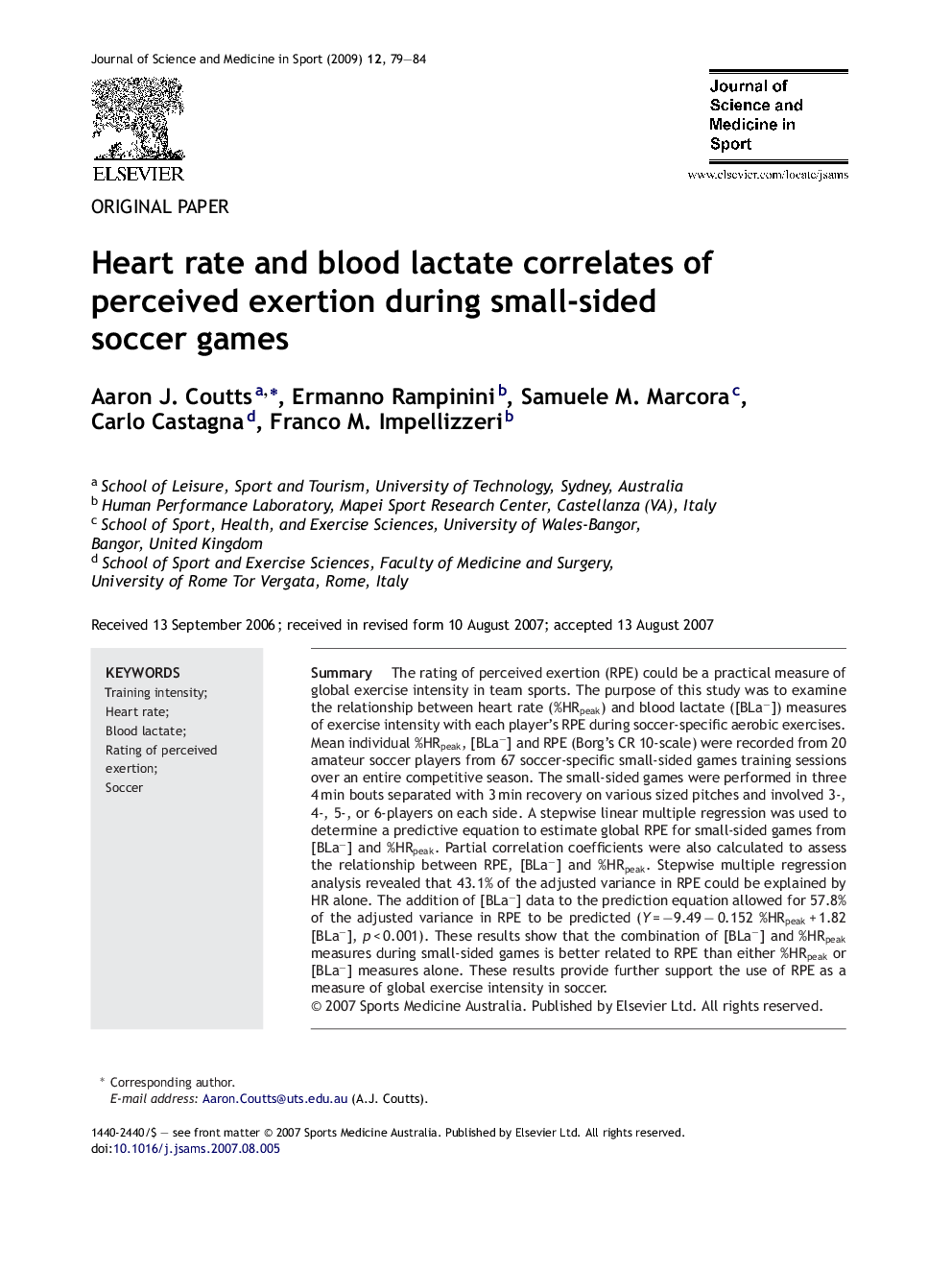| Article ID | Journal | Published Year | Pages | File Type |
|---|---|---|---|---|
| 2708791 | Journal of Science and Medicine in Sport | 2009 | 6 Pages |
SummaryThe rating of perceived exertion (RPE) could be a practical measure of global exercise intensity in team sports. The purpose of this study was to examine the relationship between heart rate (%HRpeak) and blood lactate ([BLa−]) measures of exercise intensity with each player's RPE during soccer-specific aerobic exercises. Mean individual %HRpeak, [BLa−] and RPE (Borg's CR 10-scale) were recorded from 20 amateur soccer players from 67 soccer-specific small-sided games training sessions over an entire competitive season. The small-sided games were performed in three 4 min bouts separated with 3 min recovery on various sized pitches and involved 3-, 4-, 5-, or 6-players on each side. A stepwise linear multiple regression was used to determine a predictive equation to estimate global RPE for small-sided games from [BLa−] and %HRpeak. Partial correlation coefficients were also calculated to assess the relationship between RPE, [BLa−] and %HRpeak. Stepwise multiple regression analysis revealed that 43.1% of the adjusted variance in RPE could be explained by HR alone. The addition of [BLa−] data to the prediction equation allowed for 57.8% of the adjusted variance in RPE to be predicted (Y = −9.49 − 0.152 %HRpeak + 1.82 [BLa−], p < 0.001). These results show that the combination of [BLa−] and %HRpeak measures during small-sided games is better related to RPE than either %HRpeak or [BLa−] measures alone. These results provide further support the use of RPE as a measure of global exercise intensity in soccer.
